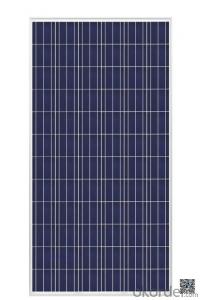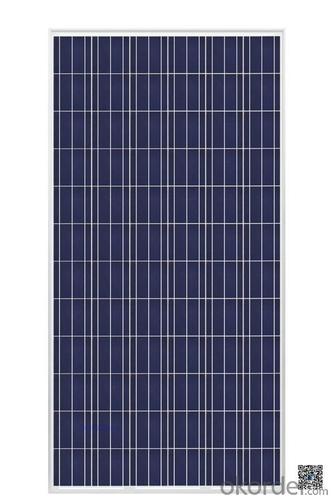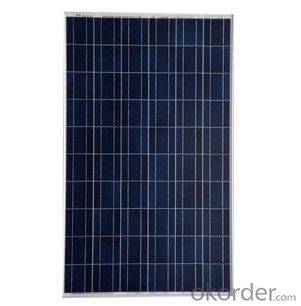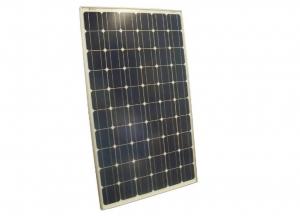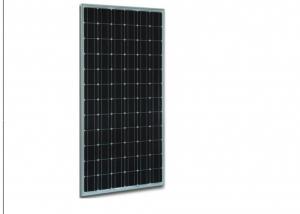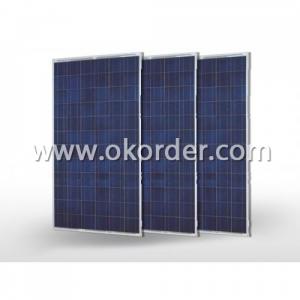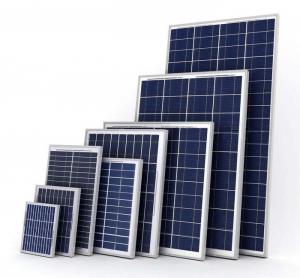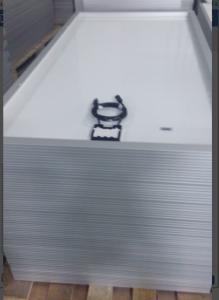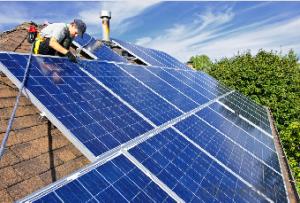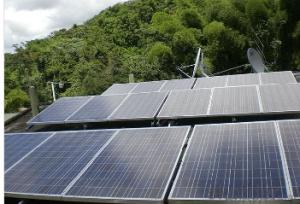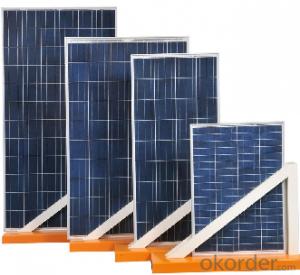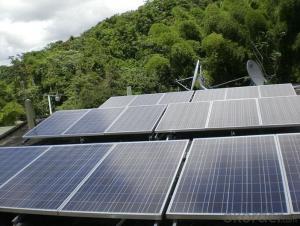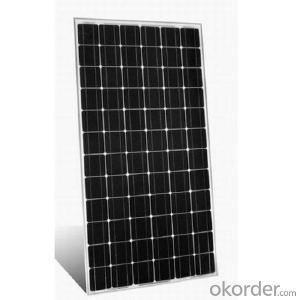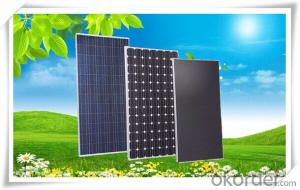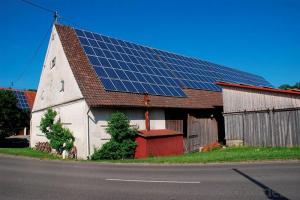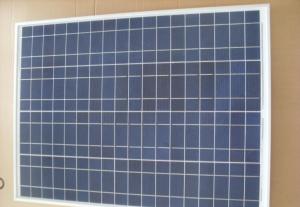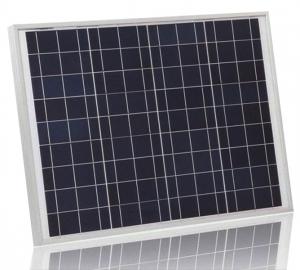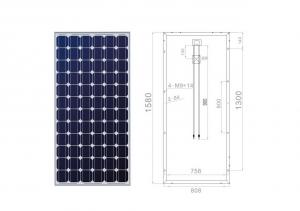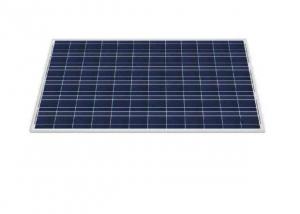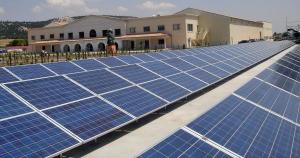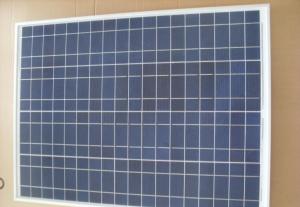Solar Panels for Sale in Los Angeles - Solar Panel Mono 260W, Solar Module
- Loading Port:
- Shanghai
- Payment Terms:
- TT OR LC
- Min Order Qty:
- 2600 watt
- Supply Capability:
- 26000 watt/month
OKorder Service Pledge
OKorder Financial Service
You Might Also Like
Specification
We now provide
• Monocrystalline Solar Panel
• Polycrystalline Solar Panel( multicrystalline silicon Solar Panel)
Features of our products:
• High conversion efficiency mono/poly-crystalline amorphous silicon solar cells
• Modules incorporate high performance bypass diodes to minimize the power drop caused by shading
• High transmittance, low-iron tempered glass
• High performance EVA encapsulant to prevent destroying and water.
• AI frame: without screw, corner connection. 8 holes on the frame can be installed easily
• Good performance of preventing from atrocious weather such as wind and hails
Limited Product Warranty
Under normal application, installation, use and service conditions, if MODULES fail to conform to this limited product warranty due to defects in material or workmanship, then for a period ending 12 years from date of sale as shown in the invoice or Contract issued by CNBM SOLAR. CNBM SOLAR will, at its option, either repair or replace or refund the purchase price as paid by the client for these defective MODULES. The repair or replacement or refund remedy shall be the sole and exclusive remedy provided under the “Limited Product Warranty” and shall not extend beyond the 12 years period set forth herein. It will be performed directly to the direct client only. This “Limited Product Warranty” does not warrant a specific power output, which shall be exclusively covered under “Limited Peak Power Warranty” as
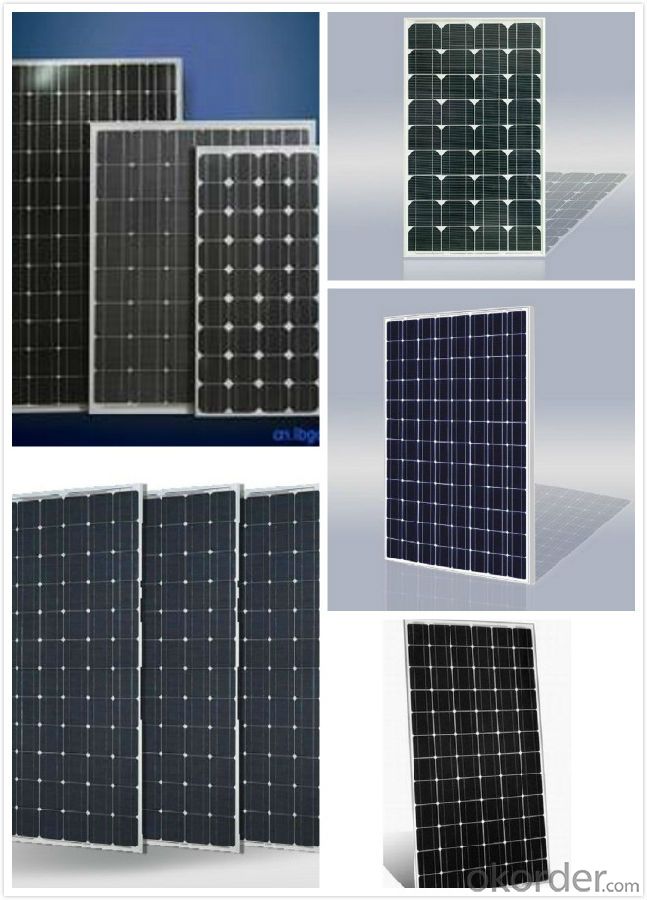
Product Description:
This installation Manual contains essential information for the electrical and mechanical installation that your must know before installing CUSTOMER PV modules. This also contains safety information you need to be familiar with .All the information described in this manual are the intellectual property of CNBM and based on the technologies and experiences that have been acquired and accumulated in the long history of CUSTOMER. This document does not constitute a warranty, expressed or implied.
CUSTOMER does not assume responsibility and expressly disclaims liability for loss, damage, or expense arising out of in anyway connected with installation, operation, use or maintenance of the PV modules. No responsibility is assumed by CUSTOMER for any infringement of patents or other rights of third parties that may result from use of PV module.
CUSTOMER reserves the right to make changes to the product, specifications or installation manual without prior notice.
Solar panel working process
In addition to being the ultimate source of all life on earth, the sun is an infinitely renewable, completely pollution-free source of electricity. Instead of burning fossil fuels dug up from the ground in a big power plant – a very 19th century, industrial age approach, when you think about it – solar panels convert sunlight directly into electricity, with no harmful emissions.
The basic unit of a solar panel is a solar cell, which usually consists of one or two layers of silicon-based semiconductor wafers. When struck by the photons in sunlight, the solar cell generates an electrical charge due to the "photovoltaic effect" – which is a pretty good name, since it produces voltage from photons. The flow of these electrons moves in a steady electrical current from one side of the cell to the other.
Dozens of these PV cells are packaged together into solar modules, which in turn are packaged into solar panels that are mounted on a rooftop and arranged to maximize their hours of exposure to direct sunlight. Because the electricity generated by all those solar cells is direct current (DC), it is then sent to an inverter that transforms the power into the same alternating current (AC) used by the appliances in your home and the local utility electricity distribution grid. Increasingly, these inverters are getting "smart," providing data monitoring for solar installation performance and other grid integration services.
FAQ
We have organized several common questions for our clients,may help you sincerely:
③Can you provide the peripheral products of the solar panels, such as the battery, controller, and inverter? If so, can you tell me how do they match each other?
Yes, we can, we have two companies for solar region, one is CNBM International, the other is CNBM engineering Co.
We can provide you not only the solar module but also the off grid solar system, we can also provide you service with on grid plant.
④What is your warranty system?
Our product performance guarantees for 25 years
• 12 years guarantee for workmanship
• Timeliness of delivery
• Quality Products certified (TÜV, UL, CE, ISO)
⑤How do you pack your products?
We have rich experience on how to pack the panels to make sure the safety on shipment when it arrives at the destination.
- Q: when solar panels have served their purpose, what is done with them?
- Yes, okorder /... This is a link that might help you more! You can explore the website on every subject though, to ensure you get the best information possible! Hope this helps! Kintalia
- Q: Also, where can solar panels be purchased in the Binghamton/Liberty/Jeffersonville area? Home Depot has some on their website I would like to see them in a store before purchasing or ordering them.
- Enacted okorder Hope that you find the above enclosed information useful. 09/9/20
- Q: the solar panel works with LEDs, small bulbs,etc but neve with any dcmotor. Please help. I have a science exhibition.
- It may be that the power output of your solar panel is not enough to drive the DC motor. It is producing up to 6 volts but it may not be producing many milliamps. LEDs need very little power to work but DC motors often need quite a high current to get them turning. If you can run several solar panels in parallel, you can probably increase the available current. Alternatively, can you expose the existing panel to much more light so as to get it to work at its maximum output? That might work. Good luck with your science exhibition.
- Q: okay so im lookin 4 an article which explains how practical, wokable, feasible solar panels are. only positive points please :) give me the link. PLZ HELP!!!!
- Solar Panels are practical because they provide electricity to your home directly avoiding the rates paid to the utility. They are pay themselves off in 5 years or less and supply an income stream in NJ for 5 years!
- Q: Is it really necessary to make solar panels that expensive?
- I think it will cost about %0 Million US for a 50 Mega Watt Factory
- Q: Do solar panels require regular cleaning?
- Yes, solar panels do require regular cleaning to maintain their efficiency. Dust, dirt, bird droppings, and other debris can accumulate on the surface of the panels, reducing their ability to generate electricity. Regular cleaning ensures optimal performance and maximizes energy output.
- Q: hi, i got a pond and i am planning of putting some lights on it during night time. but i want to use solar panels and i have done a bit of research about solar panels and i know how they work, i know that the common voltage to use is 2v so you can use car batteries or deep cycle batteries, but my question is:. what wattage of bulb can you recommend2. how long it would take to drain my battery (can i have it overnight)3. and what wattage of solar panel should i get enough to recharge my battery the next day.hope anyone can help..thanks
- select 2V, and it will tell you how big of a battery bank and how big of a solar panel you need. For my example, I need a 7ah 2V battery and a 20watt panel.
- Q: How do solar panels affect my electricity bill?
- Solar panels can significantly reduce your electricity bill by generating electricity from the sun's energy. This self-generated electricity can power your home or business, reducing the amount of electricity you need to purchase from the grid. In some cases, if your solar panels produce more electricity than you consume, you may even receive credit or payment for the excess energy fed back into the grid.
- Q: does anybudy know about solar panels? plz reply me
- Solar panels, often connected to other panels to form an array will produce electricity when exposed to the sun. At this time solar panel is one of the fastest growing business in the world. Given the fact that most of our energy comes from fossil fuels (Oil, Natural Gas and Coal) and that those resources are getting used up and more expensive to get to, and given the fact that solar panels are getting cheaper and more efficient, eventually, the electricity produced by solar panels (or photovoltaic panels as they are sometime called, PV for short) will be cheaper than that of CO2 spewing electrical plants. Actually, it could be argued that if the coal, natural gas and oil industry was not subsidized so much by our governments, and if you demanded that the process of producing electricity from those sourced be as clean as PV, PV would be a cheaper source of electricity than fossil fuel already. Make sure to also look into the solar panels that produce hot water. SHW (Solar Hot Water) is very developed in country such as Israel, where the law demands that all new house be build with SHW systems. Those panels are very efficient at capturing the heat of the sun and produce hot water much cheaper over their life than using gas or electricity.
- Q: What are the different types of solar panels?
- There are three main types of solar panels: monocrystalline, polycrystalline, and thin-film. Monocrystalline panels are made from a single crystal structure, making them highly efficient but also more expensive. Polycrystalline panels are made from multiple crystal structures, offering a slightly lower efficiency but a more affordable price. Thin-film panels are made by depositing a thin layer of semiconductor material onto a substrate, making them flexible and lightweight, but with lower efficiency compared to crystalline panels.
Send your message to us
Solar Panels for Sale in Los Angeles - Solar Panel Mono 260W, Solar Module
- Loading Port:
- Shanghai
- Payment Terms:
- TT OR LC
- Min Order Qty:
- 2600 watt
- Supply Capability:
- 26000 watt/month
OKorder Service Pledge
OKorder Financial Service
Similar products
Hot products
Hot Searches
Related keywords
